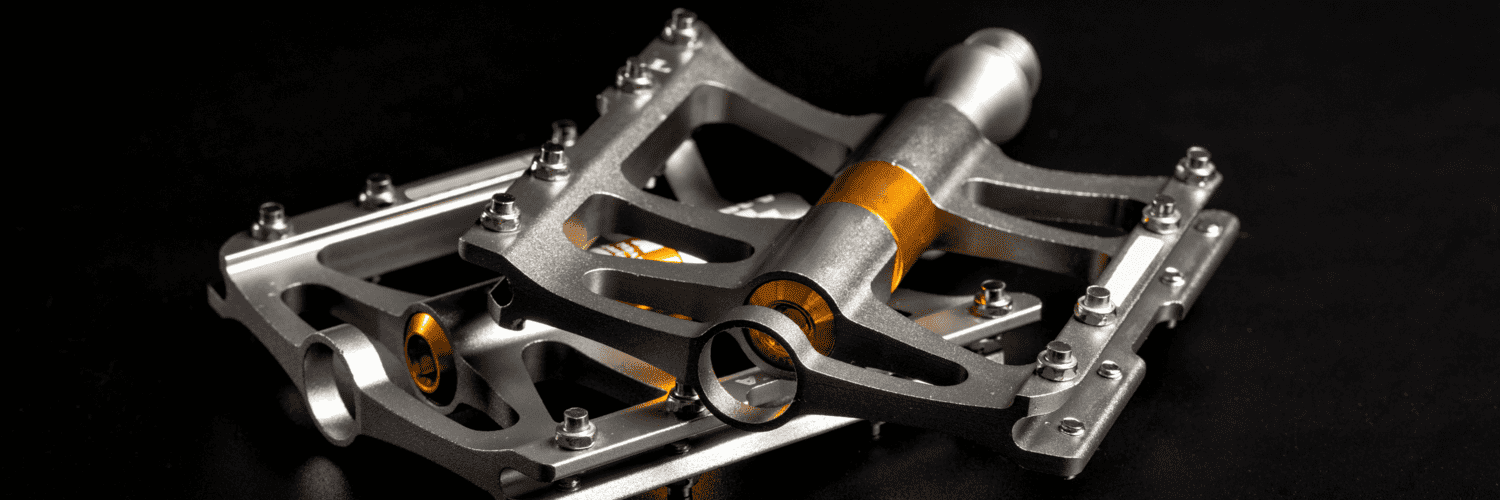When choosing a material for a metal part, two of the most important considerations are the metal’s strength and weight. Many applications require both high strength and low weight, but finding a material that can meet both of those requirements can be tricky.
Titanium and aluminum are two of the most popular metals known for their high strength-to-weight ratios. These metals are often used when steel or other common materials are too heavy for the application—for example, in the aerospace industry, where every pound of weight increases costs and must be minimized as much as possible.
While titanium and aluminum are both strong, lightweight, nonferrous metals, they have very different properties and applications. This article will compare and contrast titanium vs. aluminum in terms of their physical and mechanical properties and use cases to help you choose which of these metals is right for your application.
Titanium vs. Aluminum Properties
To start, let’s look at the characteristics that titanium and aluminum have in common. In addition to their excellent strength-to-weight ratios, both metals have excellent heat tolerance and corrosion resistance. As nonferrous metals, neither is magnetic.
However, this is where the similarities end. Though aluminum is quite strong relative to its weight, it’s not nearly as strong as titanium. Depending on the type of aluminum alloy, aluminum’s tensile strength ranges from about 35 to 80 ksi. Commercially pure titanium is comparable to aluminum alloy in strength, but the tensile strength of titanium alloys like 6-4 titanium is upwards of 160 ksi.
While both titanium and aluminum are lightweight, aluminum’s density of approximately 0.1 lb/in3 is significantly lower than titanium’s 0.16 lb/in3. This means that a titanium part will be heavier than an equivalently sized aluminum one, but with titanium, less material is needed to achieve the same strength.
There are further differences between titanium vs. aluminum when it comes to electrical and thermal conductivity. Titanium is a poor conductor, having only about 3.1% of the conductivity of copper. Aluminum, on the other hand, is an excellent conductor at around 64% of the conductivity of copper.
Finally, there is a major difference in titanium vs. aluminum costs. Aluminum is exceptionally cheap and abundant, making it a cost-effective metal for many applications. Titanium is considered a relatively expensive material. However, while titanium adds cost, it can increase value, as titanium parts are made lighter, stronger, and more durable than aluminum parts.
|
Top-Grade Aluminum for Every Purpose and Industry |
||
|
New Aluminum Plate 6061 |
New Aluminum Rectangular Bar |
All Aluminum Shapes |

|

|

|
|
Customizable thickness: Measure in inches. You can get various options for all industry applications.
Can be cut to specific shapes and sizes: Excellent weldability to cater to unique project needs. Corrosion resistance: Grades like 6061-T651 are perfect for marine hardware applications that require superior rust resistance. |
Environmental resilience: Due to its heat treatable nature, 6061 aluminum does well in extreme conditions.
Wide selection of sizes and dimensions: Choose your sizes based on tensile strength, width, and weight. Good machinability: It’s lightweight and high strength makes it flexible for a number of applications. |
Reliable supply: Consistent, certified aluminum stock you can trust.
High-quality material: Superior-grade aluminum for precision needs. Custom cuts: Accurate cuts down to thousandths of an inch. |
Titanium vs. Aluminum Applications
Aluminum is the most abundant metal on Earth, so it makes sense that it has a wide range of uses. Aluminum can be found in just about any application that requires low weight and high strength, including aircraft, building materials, bicycle frames, boats, and automotive frames. Some of the stronger alloys are used for molds for plastics. Because of its conductivity and low cost, aluminum is commonly used in applications requiring high conductivity such as electrical wiring, heat exchangers, and cookware.
Titanium is also used for aircraft and vehicles when even higher strength is required. Titanium is biocompatible, so it is often used in medical applications like joint replacements, pacemakers, cranial plates, and dental implants.
The shared qualities of aluminum and titanium make them both valuable materials in chemical, marine, automotive, and aerospace applications, where strength, weight, and corrosion resistance are the most important considerations. In these cases, the choice of titanium vs. aluminum often comes down to space and cost. When the strength-to-weight ratio must be as high as possible, titanium is the superior choice and can handle high-strength requirements while taking up less space than aluminum. When aluminum’s strength-to-weight ratio is adequate for the application, however, it tends to be a more cost-effective choice.
Another factor when choosing between titanium and aluminum is machining waste. While machining inexpensive aluminum isn’t much of a problem, titanium is more valuable, and the material costs can add up quickly. For this reason, aluminum is often used as a prototyping material for parts that will be made of titanium in production.
Your Local Metal Supplier Is Here to Meet Your Titanium and Aluminum Needs
Industrial Metal Service specializes in supplying aluminum, titanium, steel, and other metals for machine shops, fabricators, and manufacturers in the San Francisco Bay Area. We also ship nationwide to shops that don’t have the benefit of a local, reliable metal supplier. We stock an extensive inventory of titanium and aluminum alloys and offer customers the option of buying new material sourced from U.S. mills or verified metal remnants, which offer considerable savings in comparison to buying new material.
Contact Us
 Angle
Angle Cast Plate
Cast Plate Diamond Plate
Diamond Plate Flat Bar
Flat Bar Plate
Plate Round Bar
Round Bar Square Bar
Square Bar Square Tubing
Square Tubing Round Tubing
Round Tubing Angle
Angle Channel
Channel Diamond Plate
Diamond Plate I Beam
I Beam Round Bar
Round Bar Sheet
Sheet Square tubing
Square tubing Round Tubing
Round Tubing Rectangular Tubing
Rectangular Tubing Plate
Plate Rectangular Bar
Rectangular Bar Rectangular Tubing
Rectangular Tubing Round Bar
Round Bar Sheet
Sheet Square Bar
Square Bar Square Tubing
Square Tubing
